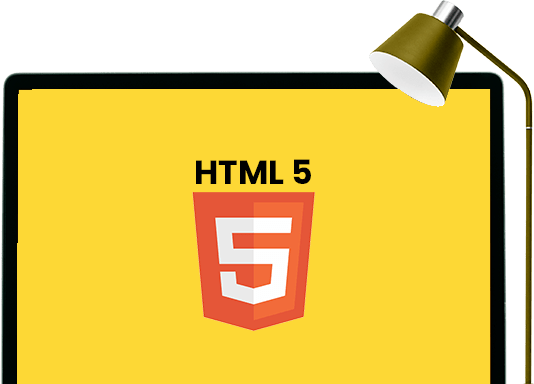Aoteng Insights
Your go-to source for the latest trends and insights.
HTML5 Development: Crafting Web Wonders with Ease
Unlock the power of HTML5! Discover tips, tricks, and techniques to easily create stunning web wonders that captivate your audience.
Understanding the Basics of HTML5: A Comprehensive Overview
HTML5 is the latest version of the Hypertext Markup Language, which is the standard language for creating web pages and web applications. It was developed to improve the web experience by providing new features that ensure better interoperability across different devices and platforms. Some of the key features of HTML5 include semantic elements like <header>, <footer>, and <article>, which enhance the structure of web content, making it more user-friendly and accessible. Additionally, HTML5 supports multimedia elements such as <audio> and <video>, allowing developers to integrate rich media directly into their websites without relying on third-party plugins.
Understanding the basics of HTML5 involves recognizing its significance in modern web development. Unlike its predecessors, HTML5 provides a more robust framework for building responsive and interactive web applications. Key aspects to consider include:
- Cross-browser compatibility: HTML5 is designed to work seamlessly across various browsers.
- Enhanced multimedia support: With built-in features for audio and video, it allows for a richer user experience.
- Improved storage options: The introduction of local storage capabilities enables developers to store data on the client side.
By mastering these essential elements of HTML5, developers can create websites that are not only functional but also provide an engaging user experience.

Top 10 Features of HTML5 That Revolutionize Web Development
HTML5 has introduced several groundbreaking features that have significantly transformed web development. Among these, the Canvas API stands out, allowing developers to create two-dimensional graphics and animations directly within the browser. This capability not only enhances user experience but also reduces the reliance on external plugins. Furthermore, the introduction of semantic elements, such as <article>, <section>, and <header>, improves the structure of HTML documents, making it easier for search engines to read and index content effectively.
Another major feature is the Geolocation API, which enables websites to access a user's geographical location. This functionality is essential for applications that require location-based services, enhancing personalization and user engagement. Alongside this, Web Storage provides a more efficient way to store data on the client side, replacing the traditional cookies. With options for localStorage and sessionStorage, developers can manage user data seamlessly, improving application performance and user experience.
How to Create Interactive Web Applications Using HTML5 APIs
HTML5 APIs provide an extensive toolkit for developers to create interactive web applications that offer an enriched user experience. By leveraging these powerful APIs, you can enhance your websites with features such as multimedia, connectivity, and storage. To begin, familiarize yourself with the primary HTML5 APIs, including the Canvas API for dynamic graphics, the Web Audio API for audio manipulation, and the Geolocation API for location-based services. These tools will allow you to build applications that are not only functional but also engaging and visually appealing.
To create your first interactive web application, start by incorporating the Canvas API into your HTML. This can be done by adding a <canvas> element in your HTML structure, followed by JavaScript to draw shapes and animations. Next, use the Web Storage API for storing user preferences and data to enhance user interaction. For example, you can create a simple to-do list application where the items are saved and retrieved using localStorage. By combining these APIs skillfully, you can build rich, user-friendly applications that meet the demands of modern web users.